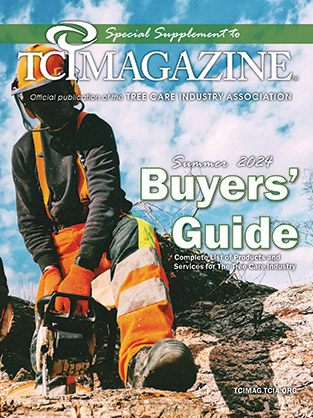Heartwood and Heart Rot, Part II: Heart Rot – Is It Serious?
Part 1 of this two-part series, “Heartwood and Heart Rot, Part 1: Are They Important to Arborists?” ran in the May 2023 issue of TCI Magazine.
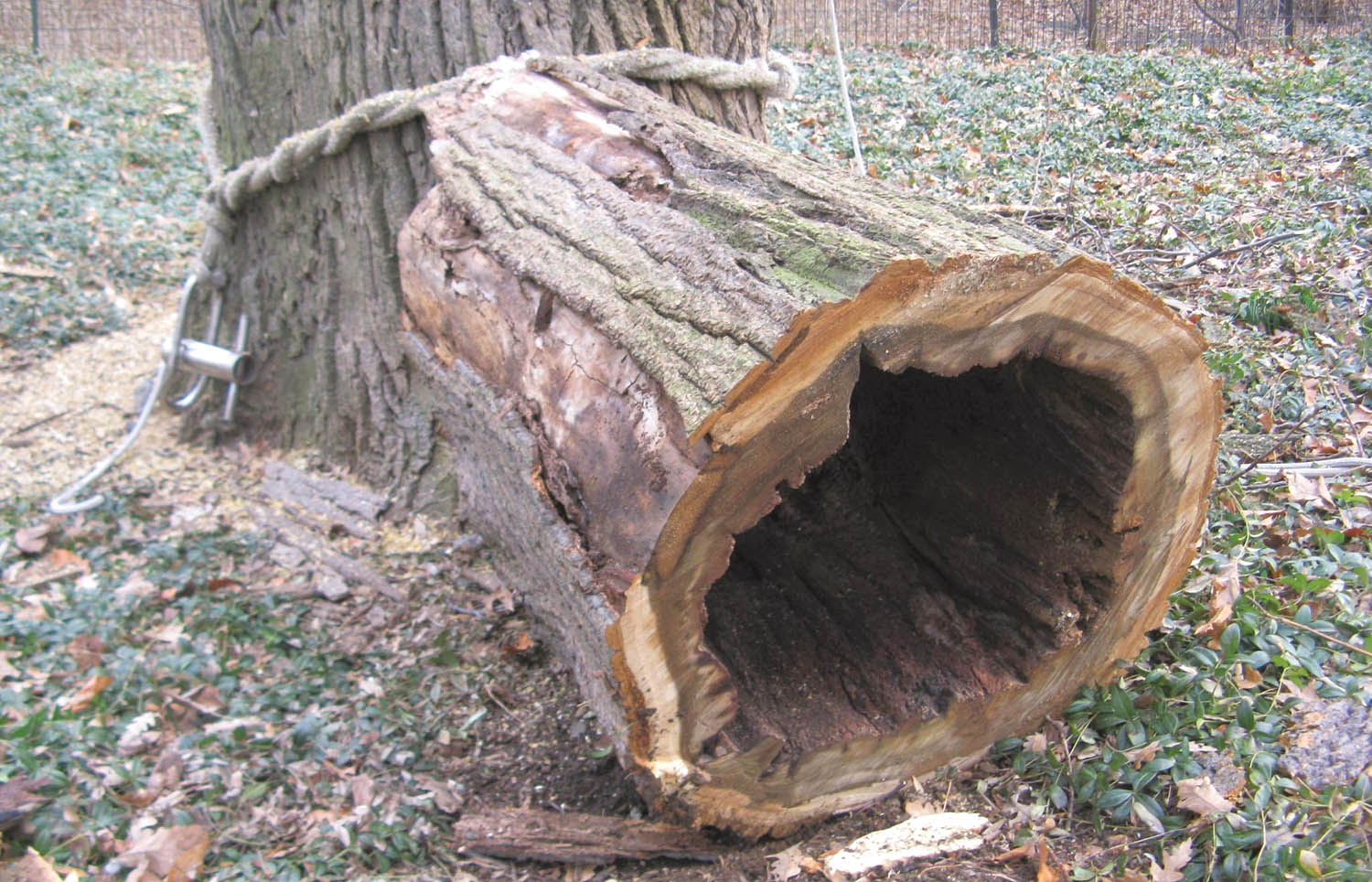
Heart rot sounds serious or possibly fatal, like heart-related health issues in humans. In practice, heart rot in trees is simply the decay of wood in the center of a stem. (Photo 1) This definition is generally accepted without regard to whether trees have heartwood, or whether the decay affects sapwood or has the potential to spread into sapwood. Arborists should know that, given this broad definition, any general conclusion about the importance or prognosis for trees with heart rot is usually not possible. This article should help arborists determine how heart rot affects tree-risk assessment and urban-tree-management practices.
Heart rot is a very common condition in urban trees. Recent research shows heart rot is present in the vast majority of younger (say, 12 to 18 inches in temperate climates) and older street and landscape trees. (Photo 2) But most urban trees will survive many years with heart rot and are probably more likely to succumb to other agents rather than heart rot alone. However, heart rot can result in tree failures, as well as affect recommendations for pruning, cabling and tree-removal operations.
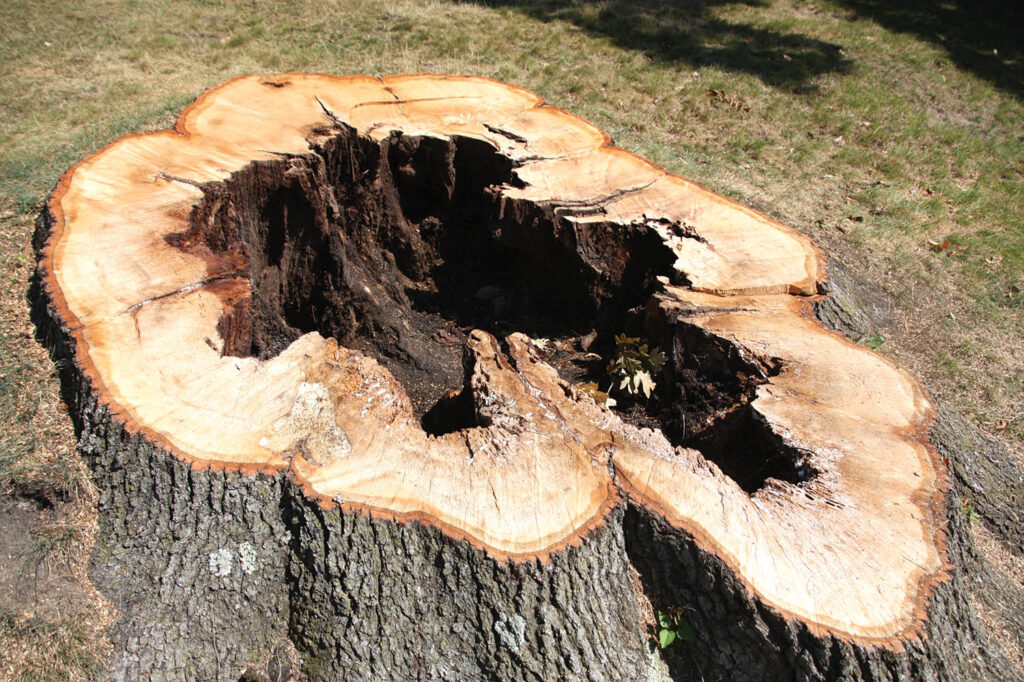
Heart-rot concept: Where have you been?
The heartwood/heart-rot concept developed from the observation that the
darker-colored wood in the center of some tree species (heartwood) may be decayed by fungi (heart rot). For many years, heart rot was believed to be restricted to nonliving heartwood and was therefore not a tree disease! (Photo 3)
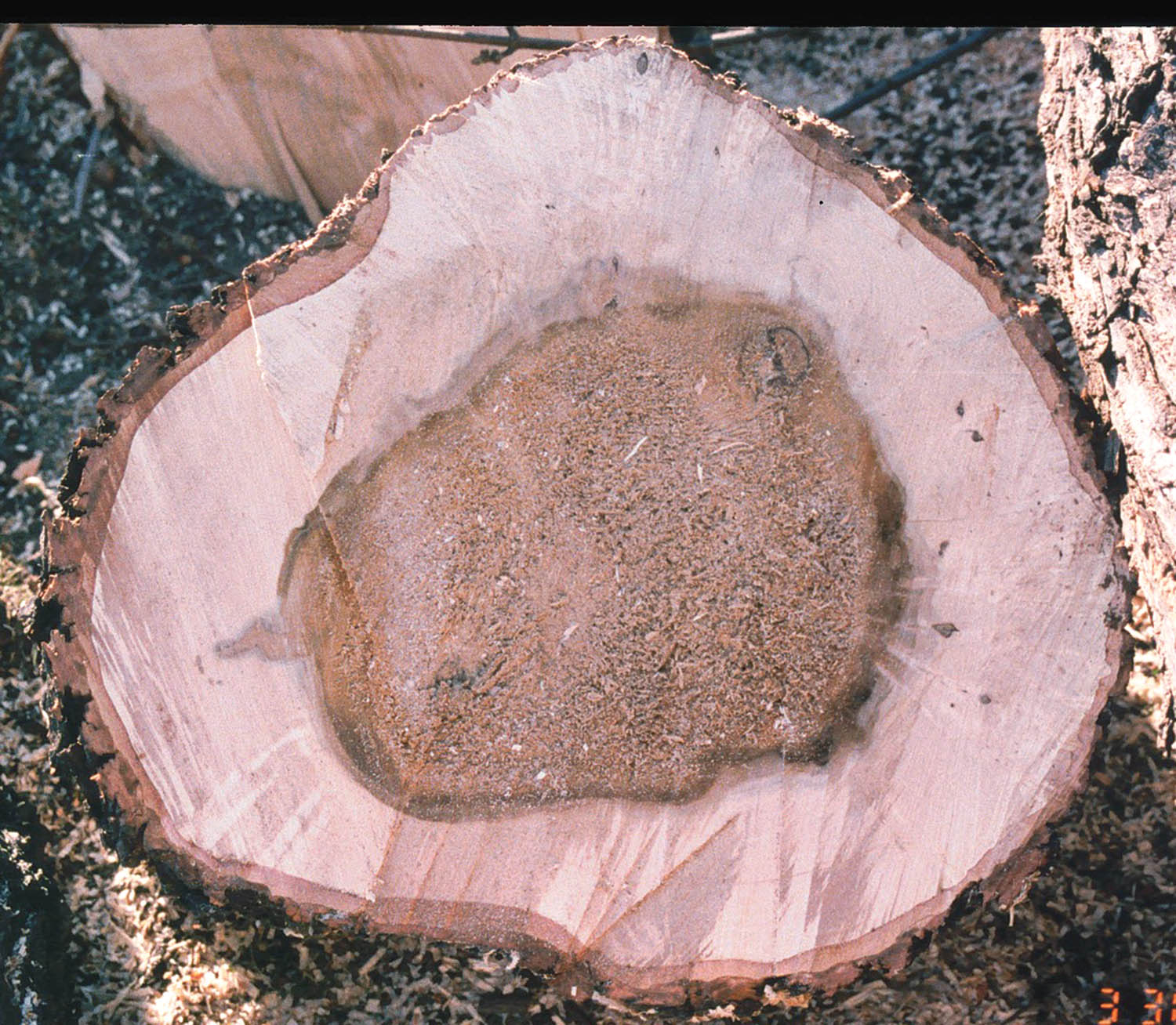
For some experts and practitioners, heart rot represented a balance between the fungi causing the decay and tree growth. In this balanced concept, the decay fungi derived nutrition from the nonliving heartwood, and the tree compartmentalized and contained the fungi within its central core, usually without significant impact on tree health or stability.
Heart-rot fungi were often initially considered saprophytes (deriving nutrition from dead wood), given their apparent restriction to nonliving heartwood. This concept changed when it was recognized that some “heart-rot” fungi can avert host defenses and invade healthy sapwood. This means that some fungi that cause heart rot also can attack healthy sapwood. What is critically important to arborists is that one interpretation does not fit all situations when decay is present in the center of a tree.
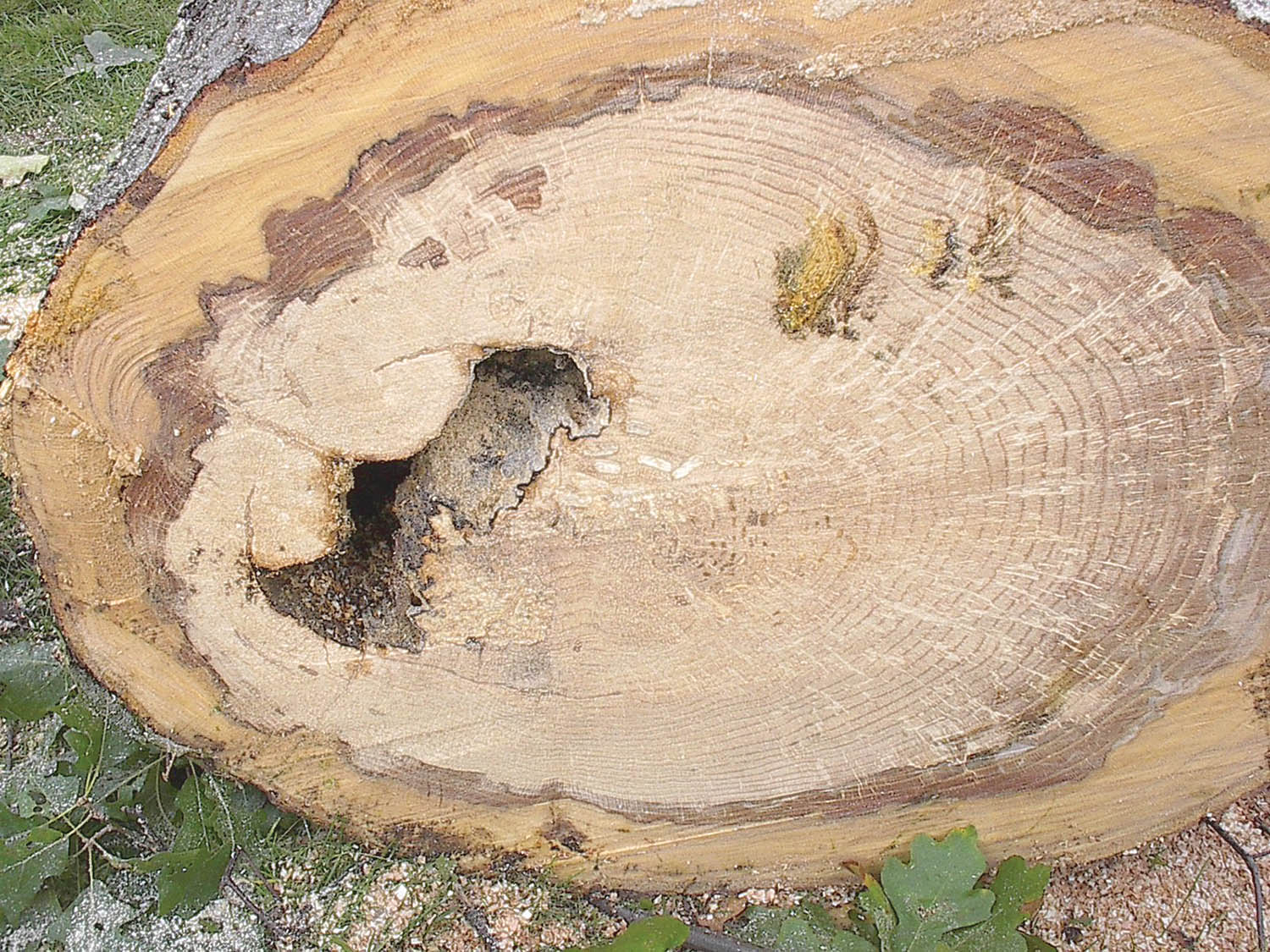
Labeling decay as “heart rot” based on stem position does not indicate that the decay fungus can overcome compartmentalization boundaries and decay healthy sapwood. (Photo 4) Arborists should be keenly aware of this confusion and know that because some decay fungi also can invade and decay healthy sapwood, they may have a much greater impact on tree stability. Unfortunately, the only way to know if a heart-rot fungus can invade healthy sapwood is to identify the fungus present based on its fruiting on the tree or other, more complex analyses.
When is heart rot important?
Is that pain in my chest something I should be concerned about, or is it just the pepperoni pizza I ate too much of last night? Small differences can sometimes make all the difference. The seemingly small difference of whether a heart-rot fungus can invade healthy sapwood or not can have large implications on tree stability.
The biomechanical reason for this is simple in the case of heart rot. Most trees can tolerate relatively large amounts of heart rot in their central core without large losses in stem strength or increased potential for failure, because most stem strength is in outer wood fibers. (Photo 5) For this reason, trees with moderate amounts of heart rot, and even trees where heart rot has resulted in hollows, are often still mechanically stable. There are only a few cases where heart rot becomes critical to arborists working in the field.
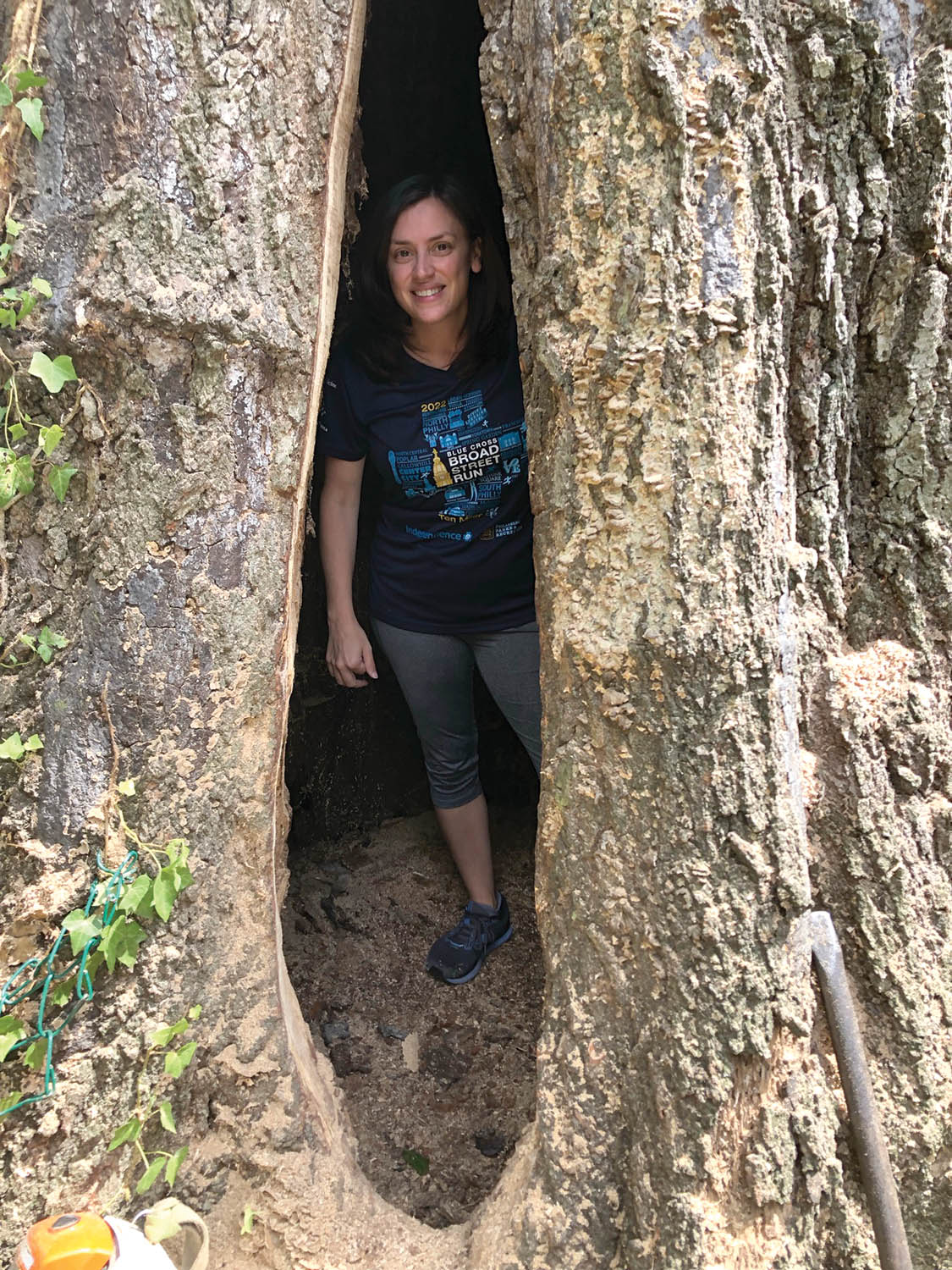
These include cases for which:
- Heartwood and subsequent heart rot occupy a large cross-sectional area of the stem area. Thus, heart rot can impact tree stability even without invasion of healthy sapwood. (Photo 6)
- Heart rot occurs with other known defects, such as codominant stems or severe leans, such that the combination of the decay and defects results in increased likelihood of failure. (Photo 7)
- Heart rot is off-center in orientation and/or is associated with external cavities. External cavities or eccentric decay (decay that occurs unevenly within the trunk or stem) results in much greater strength loss at lower amounts of decay than central cavities or decay. (Photo 8)
- Other tree-health factors and conditions have changed to allow decay of sapwood, in addition to existing heart rot or heart-rot decay, to spread into healthy sapwood.
Besides affecting tree stability, heart rot also can directly impact tree-management practices. Industry standards require specific hardware for bolts and cables to be installed in areas of heart rot. Heart rot also can affect the stability and predictability of felling notches and alter behavior as stems are subjected to stress loading during removal.
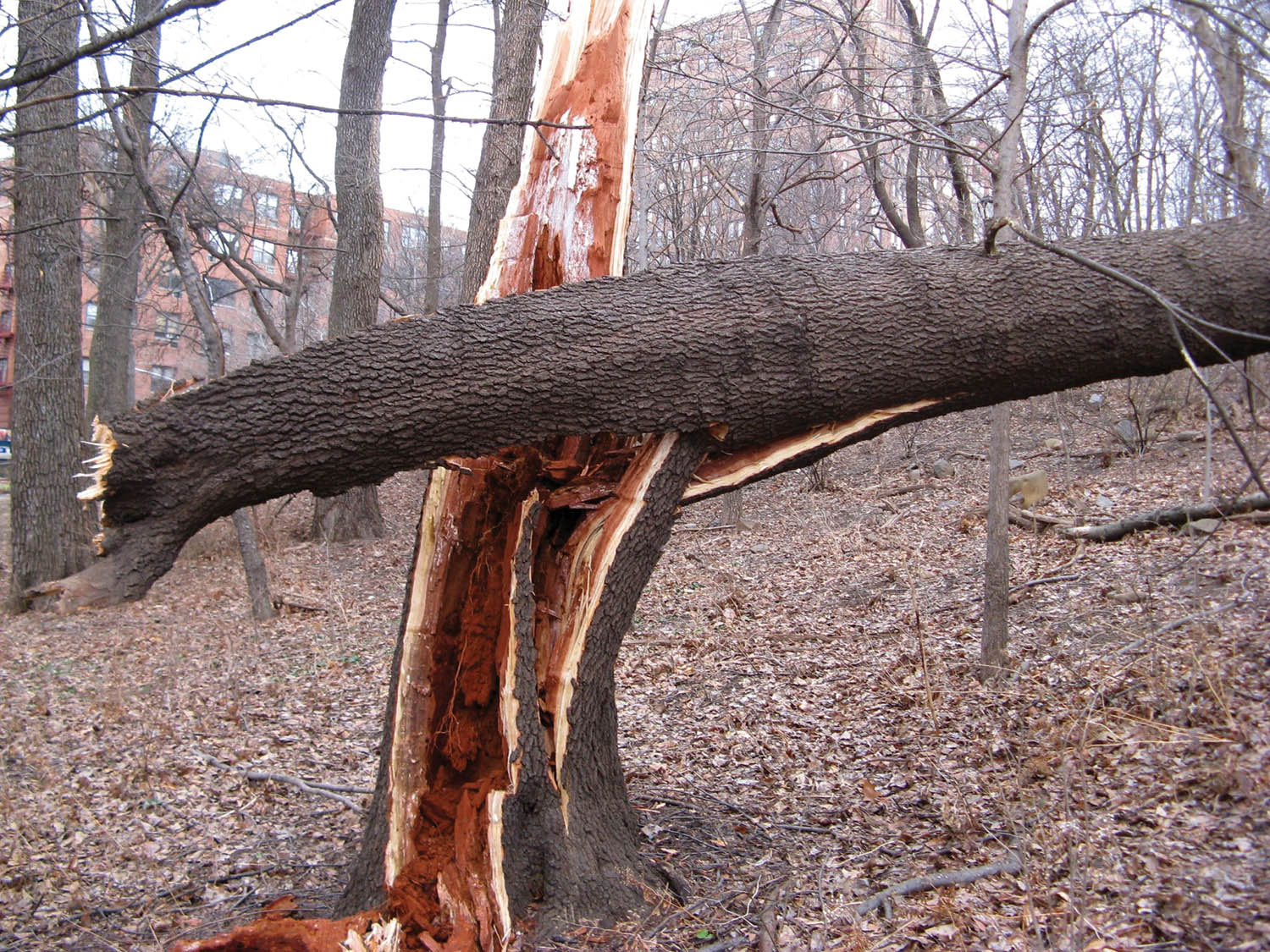

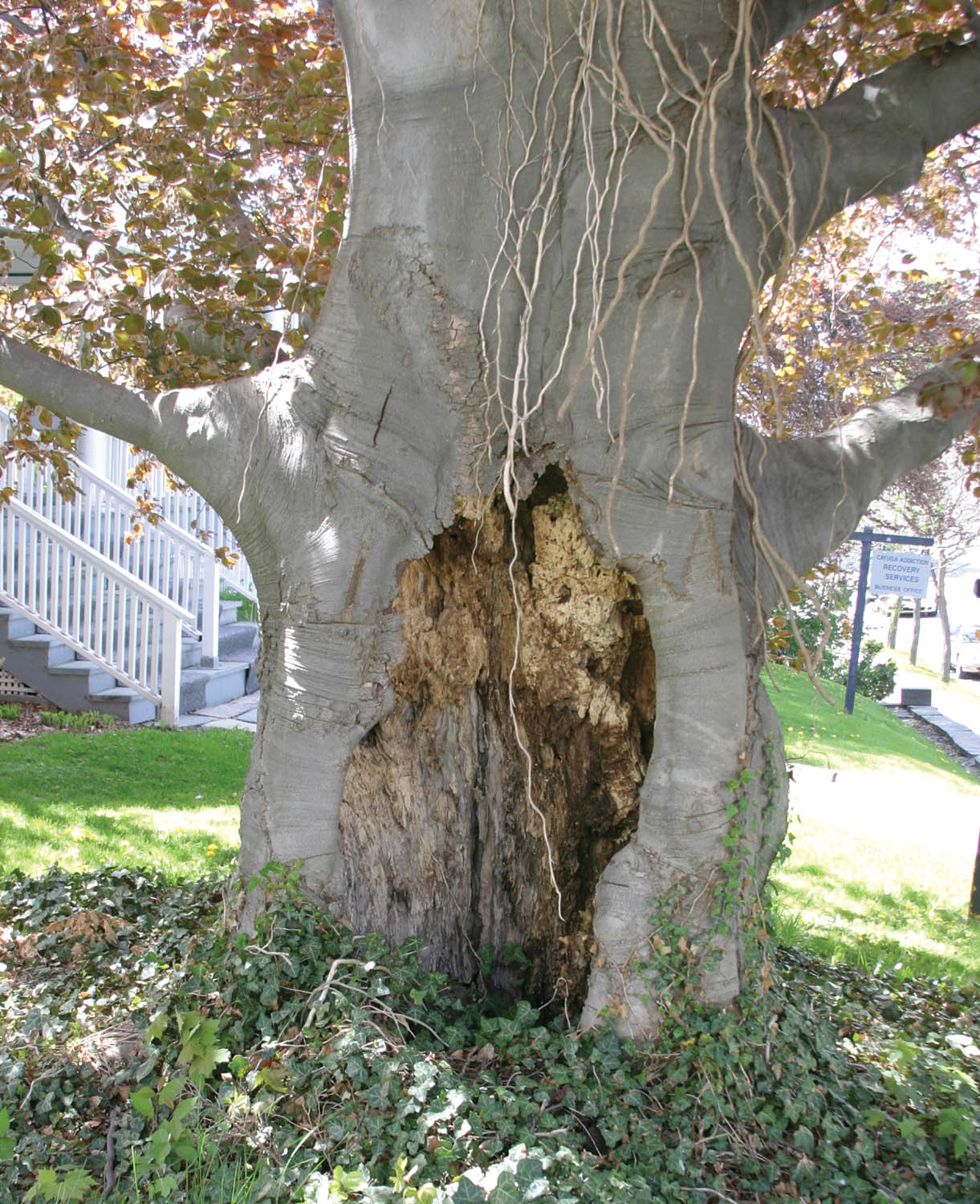
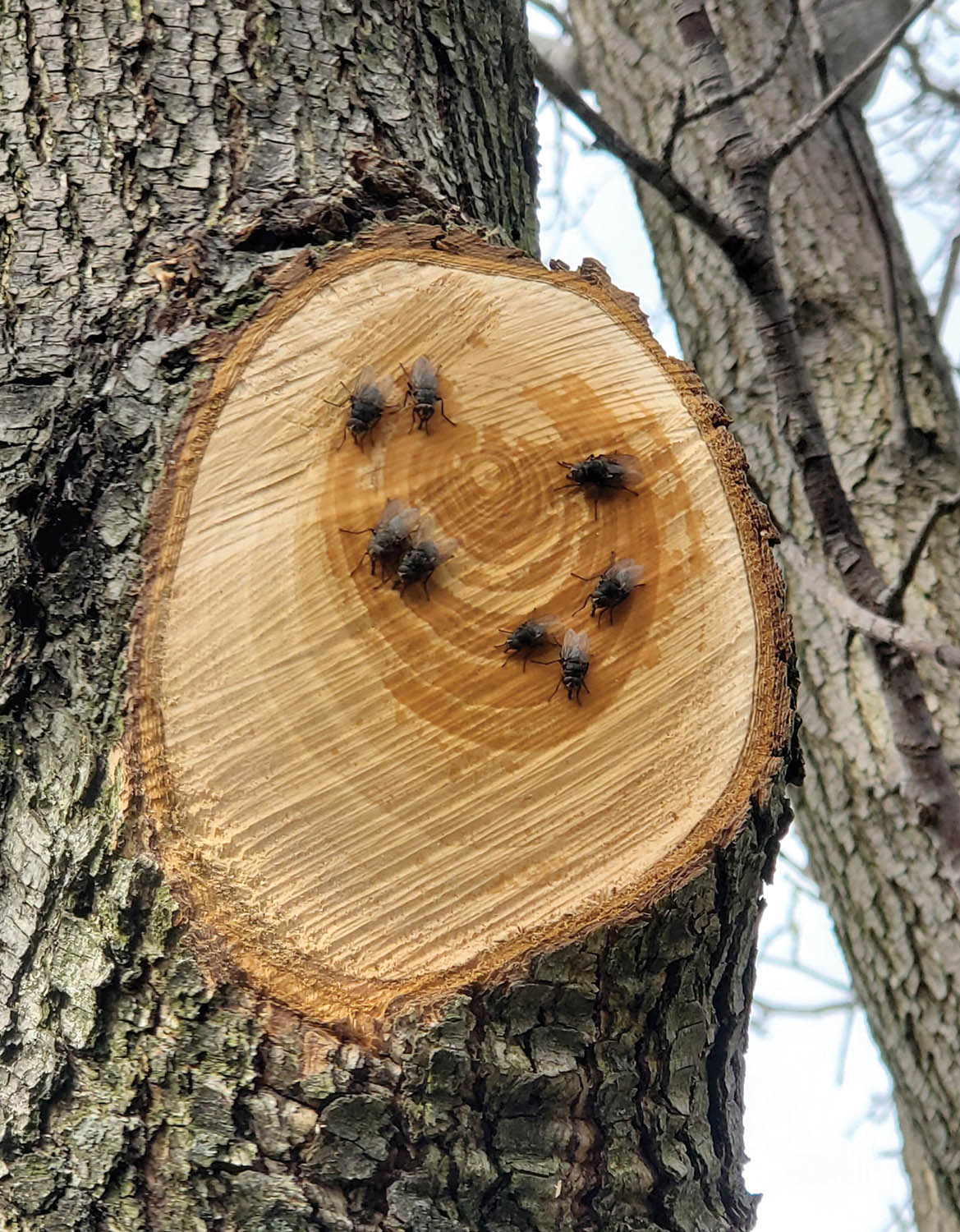
Arboriculture and heart rot
Like heart disease in humans, heart rot is most commonly a concern to arborists in larger-diameter, older trees. Although heart rot also is common in smaller-diameter trees, it is seldom serious. This raises several questions relevant to arborists, including, “Do specific management practices enable or even promote heart rot in younger, smaller trees?”
The answer in part lies in pathways of infection for heart-rot fungi. Heart-rot fungi spread primarily through the aerial dispersion of spores, and less commonly through the vectored transport of spores and mycelial fragments by insects and other arthropods, as well as by cavity-dwelling birds such as woodpeckers. (Photo 9)
However, the method of spread, spores and mycelial fragments can initiate decay infections along several pathways that include both smaller- and larger-diameter trees.
These include:
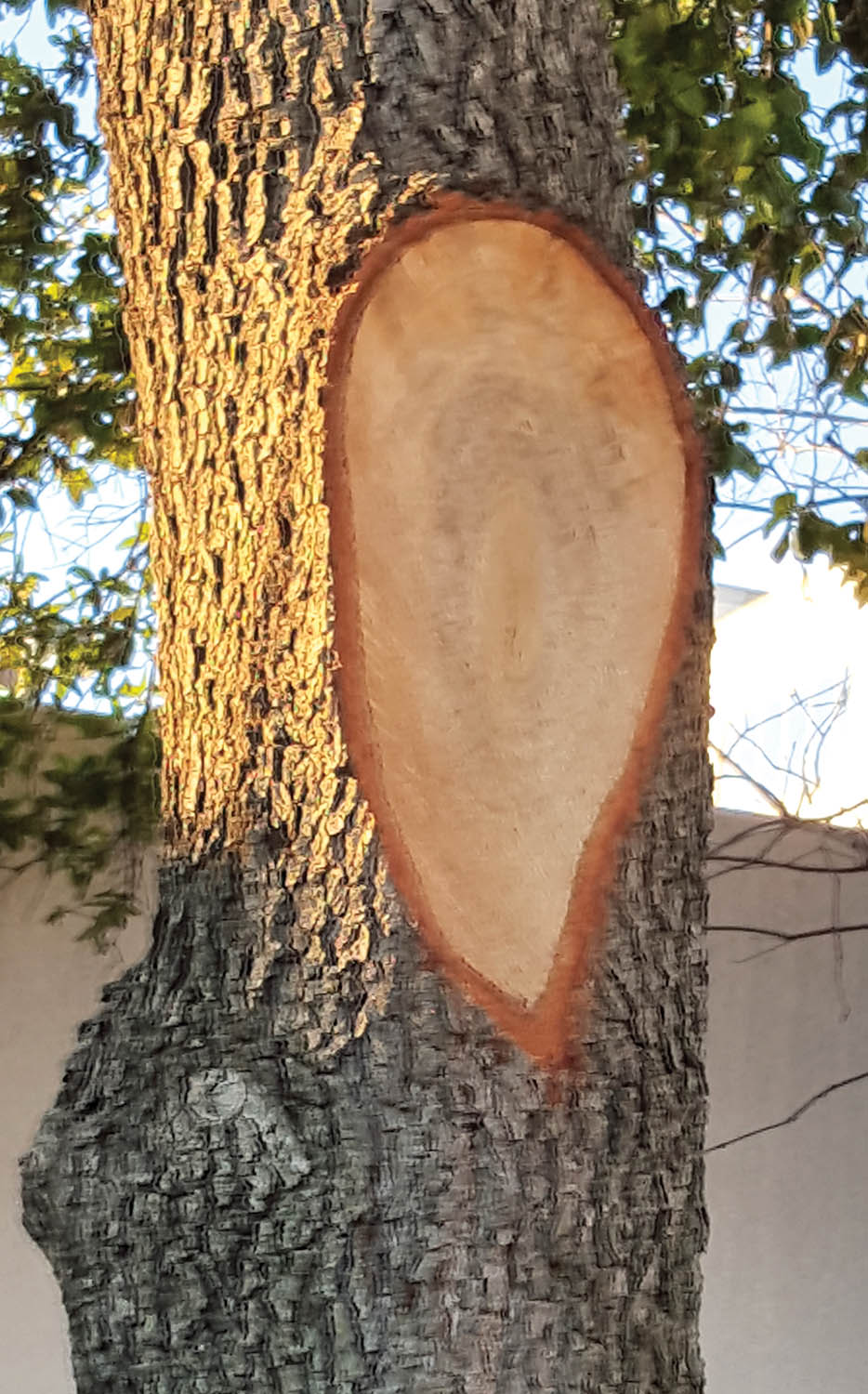
- Exposure of heartwood in branches, especially common in urban trees with large-diameter pruning wounds. (Photo 10)
- Broken tops and branches from storm injury.
- Larger-diameter, dead branches present in the crown.
- Deep trunk wounds that expose heartwood.
- Initial colonization of sapwood wounded from pests, fire or other mechanical injury. Continued wood production to the outside of the stem or branch cylinder eventually results in the wound and decay being in the heartwood position.
- Infection of the main stem from the progression of root decay. (Photo 11)
- Latent endophytic infections of sapwood in which dormant propagules eventually reach heartwood as sapwood ages. It is difficult to determine the importance of endophytic infections, since endophytes would likely be introduced through one or more of the pathways listed above.
Although arborists do not commonly contribute to heart-rot infection in landscape trees, large pruning cuts can expose significant areas of heartwood or inner sapwood (for tree species that don’t produce heartwood). Nonliving heartwood exposed by pruning or wounding is potentially more vulnerable to infection, as it only has the passive protection of the constitutive extractives (or naturally occurring compounds found in some heartwoods, some of which act as antifungal agents) to resist the spread of an infection.
Reducing heartwood exposure
Arborists can reduce heartwood exposure by using heading cuts on larger-diameter branches, if possible, to avoid exposing the heartwood in the main trunk. Arborists also should be aware that finding heartwood in smaller-diameter pruning wounds may indicate that pruning should be reduced or moderated on branches of similar size.

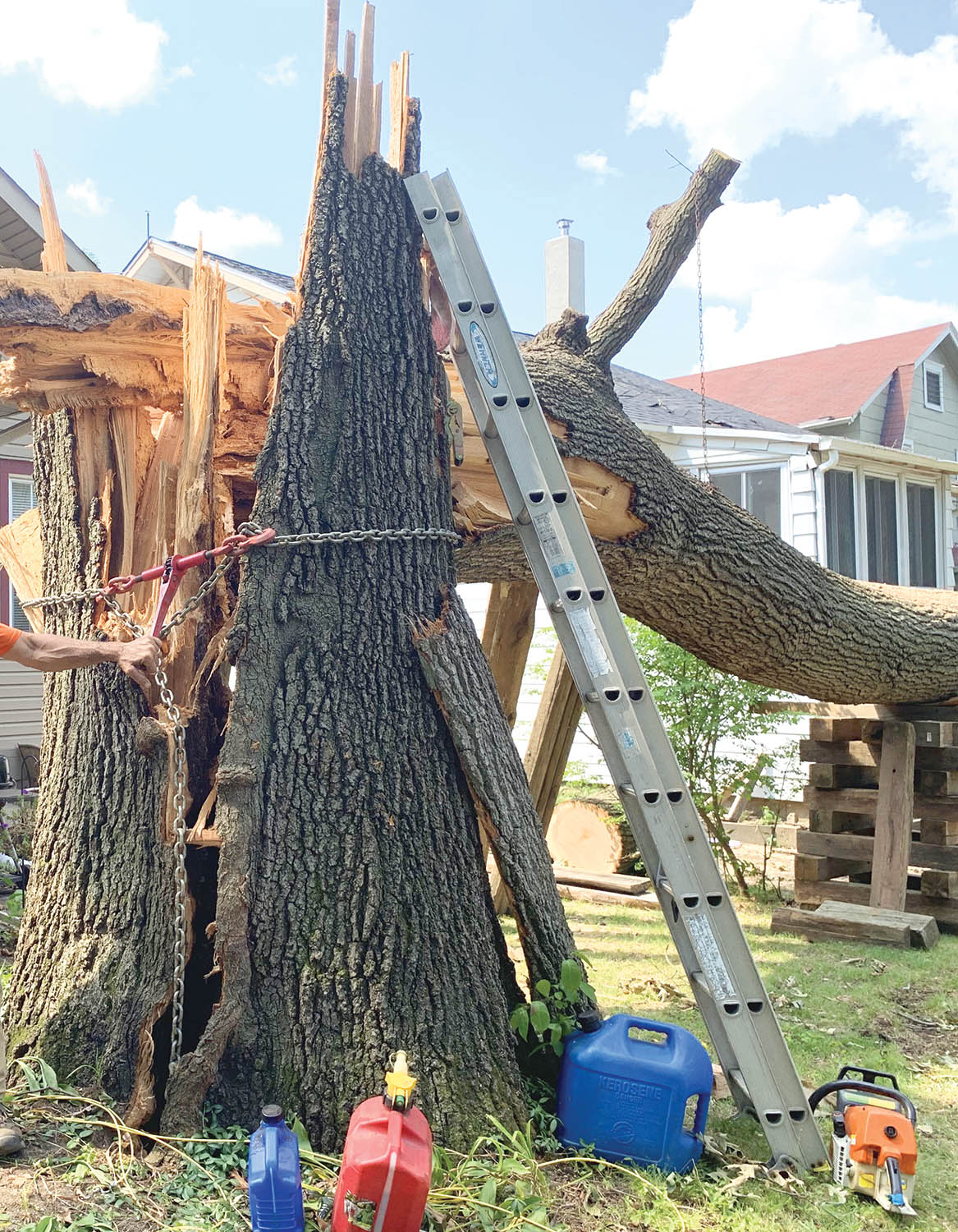
The final beat
The progression of decay fungi from heartwood into healthy sapwood is relatively uncommon due to compartmentalization boundaries and barriers formed after wounding and possibly high sapwood moisture content. The number of fungal pathogens that have devised biochemical and physical means to avoid or overcome host defenses to attack healthy sapwood is relatively small. (Photo 12)
We encourage arborists to learn more about the relatively few decay fungi that are aggressive and likely have greater long-term impacts on tree structural stability.
Christopher Luley, Ph.D., is a consultant and tree pathologist in Naples, New York. He published an updated “Wood Decay Fungi Common to Urban Living Trees” in 2022. The field guide can be purchased at the International Society of Arboriculture’s bookstore at isa-arbor.com, or as an online read-only version at treerot.com.
Kevin T. Smith, Ph.D., is supervisory plant physiologist for the USDA Forest Service in Durham, New Hampshire, which is focused on the restoration and conservation of rural and urban forests.


